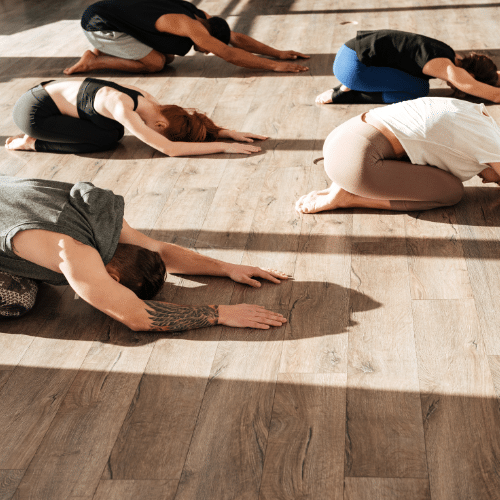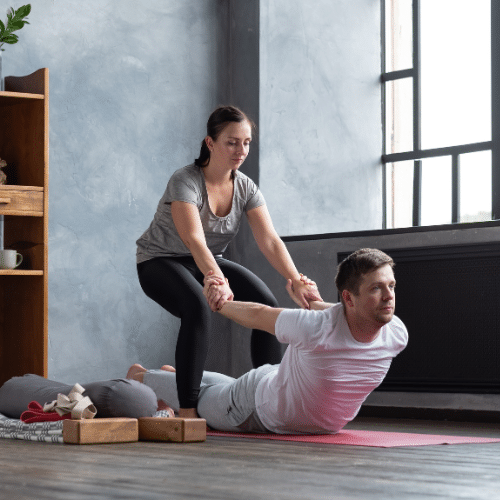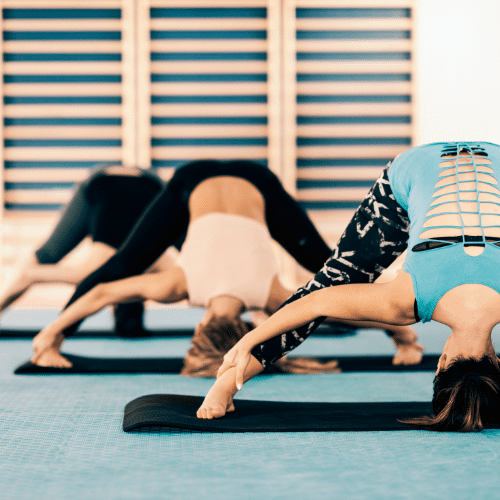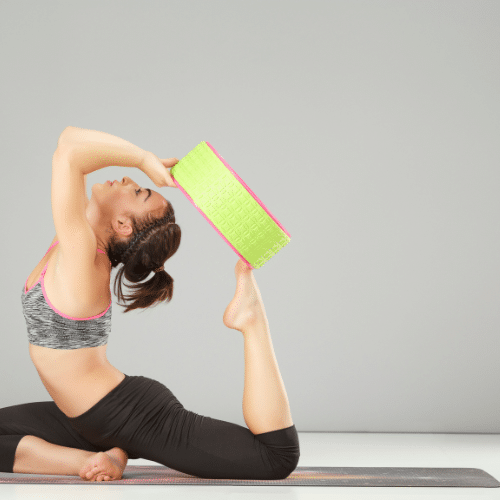Have you ever wondered what it would be like to defy gravity and be upside down? Inversion yoga poses allow you to do just that! This unique form of yoga involves various poses and exercises that involve being upside down or partially inverted. If you’re curious about this exciting and challenging practice, keep reading to learn more about inversion yoga and its benefits.
In this article, we will delve deeper into the world of inversion yoga, exploring techniques and benefits. Whether you’re a beginner or an experienced yogi, this guide will provide valuable information to help you understand and incorporate inversion yoga into your wellness routine. Get ready to turn your practice upside down and discover the transformative power of inversion yoga.
What Is Inversion Yoga?
When it comes to yoga, one term you might frequently hear is “inversion.” But what exactly does it mean? In yoga, an inversion refers to any pose where the heart is higher than the head. This can be achieved by placing the head below the heart or elevating the legs above the head. Inversions are often seen as advanced poses and require a certain level of strength, balance, and flexibility.
What Are The Benefits of Inversion Yoga Poses?
Inversion yoga poses offer many benefits for the body and mind. These poses challenge your physical abilities and provide numerous health benefits that can enhance your overall well-being.
One of the main advantages of inversion yoga poses is their ability to improve blood circulation and increase blood flow to the brain. When you’re inverted, gravity helps to pump blood towards your head, promoting better oxygen supply and nutrient delivery to the brain. This increased blood flow can positively affect cognitive function, memory, and concentration. Moreover, improved blood circulation can also help lower blood pressure and heart rate, making inversions beneficial for individuals with hypertension or cardiovascular concerns.
Inversion yoga poses can also improve lymphatic drainage, allowing the body to detoxify and cleanse itself naturally. By inverting your body, you increase circulation in the lymphatic system, which helps eliminate toxins from the body. This can help boost your immunity and fight off illnesses more effectively. Additionally, inversions are known to be very therapeutic and can reduce stress levels, improve moods, and even reduce anxiety in some cases.
Popular Inversion Yoga Poses
Salamba Sirsasana: Also known as a headstand, is an advanced inversion that requires upper body strength and balance. It involves placing the head and arms on the floor while supporting the body upside down with your legs in the air. This pose has numerous benefits, such as improved digestion, increased energy levels, and strengthened shoulders, arms, and core muscles.
Salamba Sarvangasana: Also known as a shoulder stand, is a supported inversion that involves lying on your back and supporting your body with your shoulders and upper arms. This pose can help open the chest and improve your posture, reducing stress and anxiety.
Adho Mukha Vrksasana, Also known as a handstand, is an advanced inversion requiring considerable strength and stability. It involves placing the hands on the floor and supporting the body with your arms straight while balancing upside down. Handstand can help build upper body strength, improve balance, and increase concentration.
Pincha Mayurasana: Also called a Forearm Stand, is an advanced inversion that requires both upper body and core strength. It involves placing the forearms on the floor while supporting your body with your arms straight and keeping your legs up in the air. This pose can help build strength in the shoulders, arms, and core muscles while improving balance and concentration.
Viparita Karani: Also known as Legs Up The Wall Pose, is a moderate inversion that requires little effort and can be done by anyone. It involves lying on your back and placing your legs against the wall while propping your hips with a cushion or blanket. This pose helps to reduce fatigue, promote circulation, and soothe the nervous system.
Safety Precautions When Doing Yoga Inversions
When practicing yoga inversions, it is crucial to prioritize safety and take necessary precautions to prevent injuries. While inversions offer numerous benefits, they can pose risks if not approached with care. Whether you are a beginner or have been practicing yoga for a while, following these safety precautions will help ensure a safe and enjoyable inversion practice.
1. Consult with a healthcare professional: If you have any medical conditions, such as high blood pressure, glaucoma, heart problems, or issues with your cervical spine, it is essential to consult with your healthcare provider before attempting inversions. They can provide valuable insights and guidance tailored to your specific needs.
2. Seek professional guidance: Inversions require proper technique and form. Learning inversions under the supervision of an experienced yoga teacher is recommended. They can provide instruction on alignment cues, modifications, and gradual progressions that suit your body’s capabilities. This guidance will help you establish a strong foundation and minimize the risk of injury.
3. Warm up and prepare the body: Before attempting inversions, it is crucial to warm up your muscles and prepare your body. Engaging in a gentle warm-up routine that includes stretching and opening the shoulders, neck, and core will help loosen tight muscles, increase flexibility, and reduce the risk of strains or pulls.
4. Build strength gradually: Inversions require considerable upper body strength and stability. It is essential to gradually build strength through regular poses that target the shoulders, arms, and core muscles. Focus on foundational poses like downward-facing dog, dolphin pose, and crow pose to build strength and improve stability before progressing to more advanced inversions.
5. Use props and modifications: Props such as blocks, straps, and blankets can be beneficial in supporting and stabilizing the body during inversions. They can help maintain proper alignment, reduce strain on the wrists and shoulders, and provide additional support. Utilize modifications that suit your body’s range of motion and comfort level to ensure safety and avoid overexertion.
6. Listen to your body: Pay attention to your body’s signals, and do not push beyond your limits. Respect your body’s boundaries and feelings of discomfort or pain. Inversions should never cause sharp pain or compression sensations in the neck. If you experience any pain or discomfort, ease out of the pose.
7. Practice mindfulness and focus: Inversion yoga poses demand high concentration and body awareness. Cultivate mindfulness by focusing on your breath, maintaining a steady gaze, and staying present. This will help you stay balanced and prevent accidents or loss of control while inverting.
Inversion yoga poses offer incredible benefits for both the mind and body. By implementing these safety precautions and approaching inversions with the necessary care, you can enjoy a safe and rewarding inversion practice that enhances strength, balance, and overall well-being. Safety should always be the top priority to reap the full benefits of inversions without compromising your health.
Working Up To Inversion Poses
Working up to inversion yoga poses requires patience, practice, and a gradual progression of strength and stability. Inversions, such as handstands, headstands, and shoulder stands, can be challenging and intimidating for beginners. However, with the right approach and mindset, anyone can work towards achieving these advanced poses.
Establishing a solid foundation is the first step in working up to inversions. This involves building upper body strength, particularly in the shoulders, arms, and core muscles. Regularly practicing foundational poses such as downward-facing dog, dolphin pose, and plank pose can help strengthen these areas and improve stability.
In addition to building strength, focusing on improving flexibility and balance is essential. Yoga poses targeting the hips, hamstrings, and spine, such as standing forward folds and seated forward bends, can help increase flexibility and prepare the body for inversions.
As you progress in your practice, listening to your body and not pushing beyond your limits is crucial. It is normal to feel some discomfort or fear when attempting inversions, but it is essential to distinguish between healthy discomfort and pain. If you experience sharp pain or compression sensations in the neck or any part of your body, it is important to back off from the pose and seek guidance.
Using props and modifications can also be beneficial when working up to inversions. Props such as blocks, straps, and blankets can provide support and stability, helping you maintain proper alignment and prevent strain on your wrists and shoulders. Modifying poses to suit your body’s range of motion and comfort level is essential for safe and effective practice.
Consistency is key when working up to inversion yoga poses. Aim to include inversions in your regular yoga practice, gradually increasing the time spent in each pose. Remember to focus on your breath and cultivate mindfulness during your practice, as it will help you stay balanced and centered.
Working up to yoga inversion poses is a journey that requires dedication and a positive mindset. You can gradually build the strength and stability needed to achieve these challenging poses with proper guidance, patience, and practice. Remember always to prioritize safety, listen to your body, and enjoy the process of exploring your potential in inversions.
If you’re looking for a safe space to practice inversion yoga poses, visit us at Zuda Yoga. We would love to have you!









